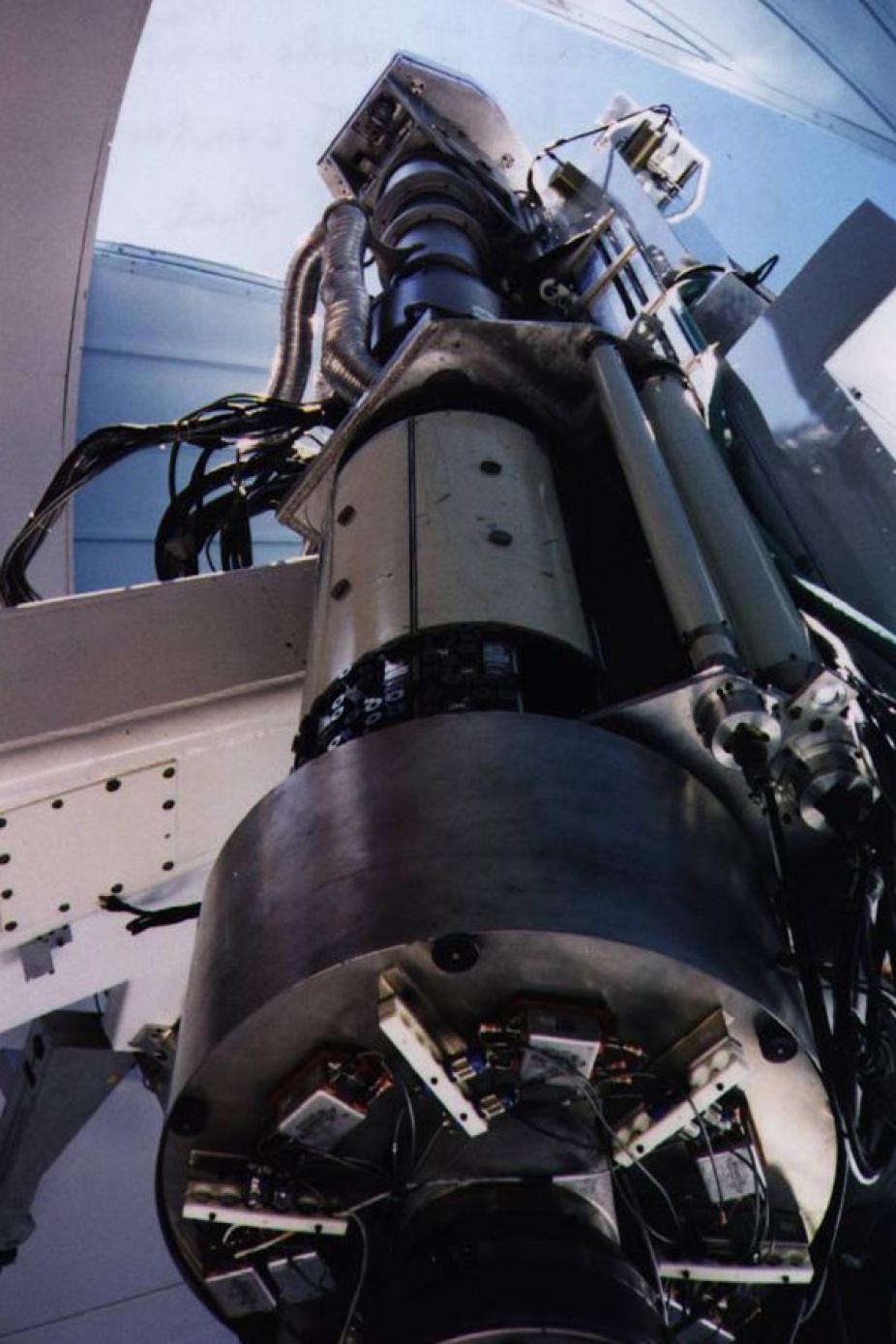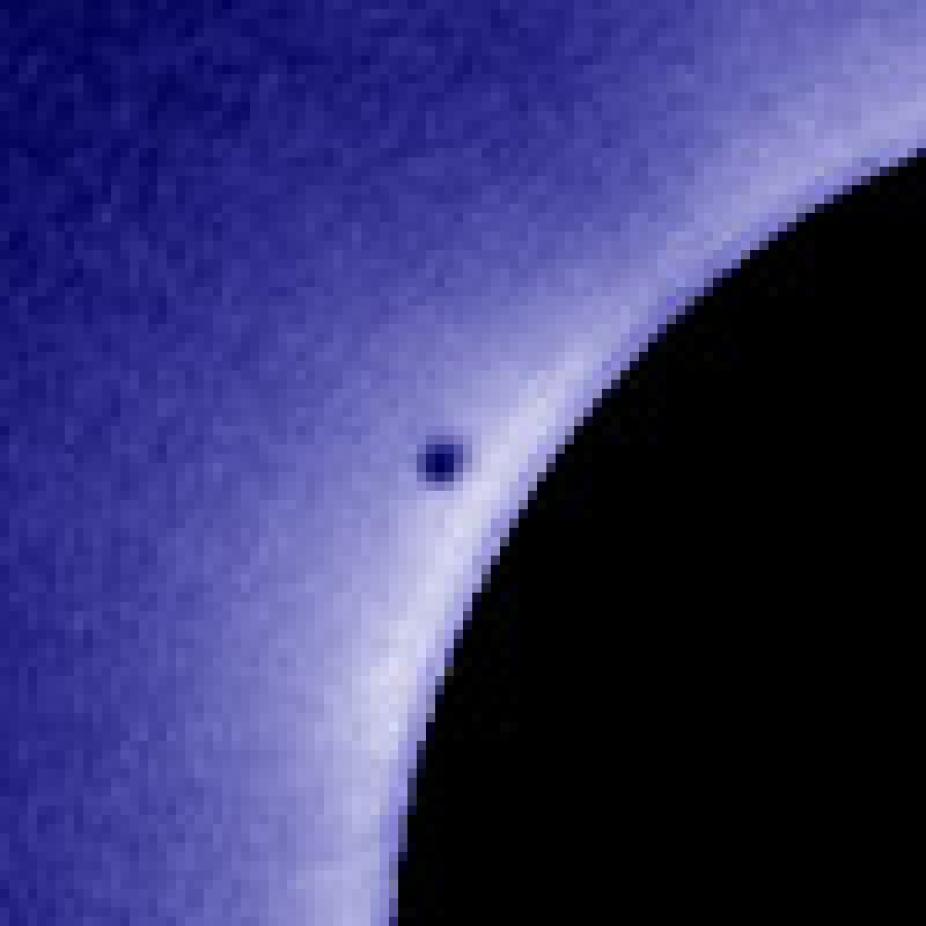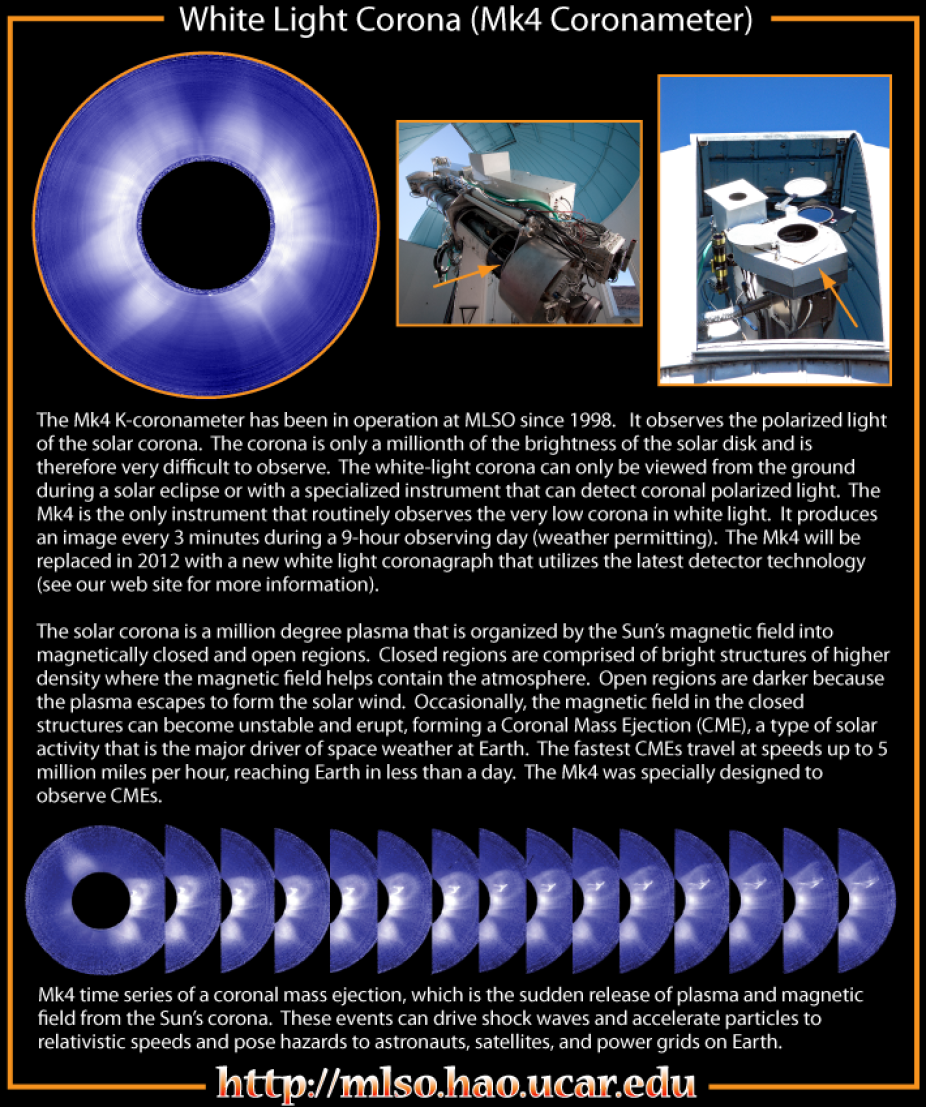Mk3 & Mk4 Coronameters

Mk3 on the MLSO spar
The Mark-III instrument was the third generation white light K-coronameter instrument at MLSO, and it operated from 4 February, 1980 through 30 September, 1999.
The field of view of the Mark-III K-Coronameter (Mk3) was 1.122 to 2.44 solar radii (as measured from sun center). The sun's corona was scanned by a linear array detection system which is rotated in solar position angle about the center of the solar disk. It took about three minutes to acquire one coronal image.
The Mark-III K-Coronameter data are scaled such that 104.4 pixels corresponds to one solar radius. Spatial sampling is 10 arcseconds radially by 0.5 degrees in azimuth. All data are rotated so that solar north is oriented straight up; solar north is known to within three degrees. Daily averaged images and mass ejection images from the K-Coronameter have instrumental `vignetting' left in the data to offset the coronal radial density gradient, allowing for better viewing of the corona. Calibrated images in units of polarization brightness (pB) are available and may be requested via the E-mail address listed above.
The Mark-IV K-coronameter, was constructed by HAO in collaboration with Rhodes College (Memphis, Tennessee). It has been in operation since October, 1998 at MLSO.
The Mark-IV K-coronameter replaces its predecessor, the Mark-III and features a high speed liquid crystal polarization modulator, a low noise CCD line array detector, and an achromatic polarizing beam splitter to measure Stokes I, Q, and U. Mark-IV produces polarization brightness maps of the lower corona in white light (700 to 900nm) from about 1.14 to 2.86 solar radii at a 3-minute cadence. Its plate scale is 5.95"/pixel, with data accuracy of approximately %15 and a noise level of approximately 4x10-9 B/Bsun.

2012 transit of Venus showing its silhouette in solar corona.
The Mark-IV instrument is a significant improvement over its predecessor in the following ways: lower system noise due to an improved detector and associated electronics, better sky noise rejection due to improved polarization optics and faster polarization modulation rate, higher spatial resolution, and a wider field of view.
These improvements result in higher quality polarization-brightness images which may be taken over a greater range of sky conditions than was heretofore possible.
For additional information about the Mark-III K-Coronameter instrument, see Fisher et al. (1981).
For information about the Mark-III K-Coronameter calibration technique, see Elmore et al. (1996).
For information about the Mk4 K-Coronameter calibration technique, see Elmore et al. (199?).

Mk4 summary slide
For more information about Mk3/Mk4, see END OF AN ERA: THE MAUNA LOA K-CORONOMETER IS DECOMMISSIONED